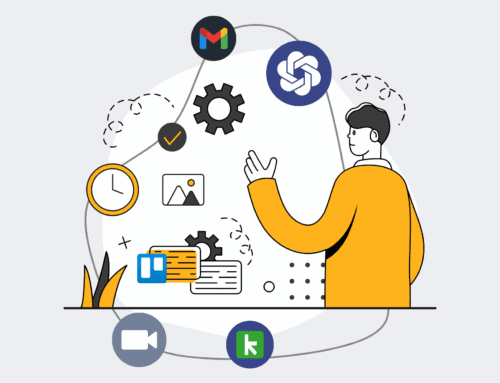From Reactive to Proactive: How Global Talent Solutions Revolutionized Employee Well-being and Reduced Burnout with Strategic HR Data
Client Overview
Global Talent Solutions (GTS) stands as a prominent multinational organization specializing in comprehensive human resource management and staffing solutions. With a vast, distributed workforce spanning diverse industries—from technology and healthcare to manufacturing and finance—GTS plays a critical role in optimizing talent acquisition, development, and retention for its global clientele. Managing hundreds of thousands of employees across various regions and business units, GTS faces the complex challenge of maintaining a cohesive and engaged workforce while addressing the unique demands of each sector. Prior to engaging 4Spot Consulting, GTS operated with a highly decentralized HR infrastructure, where essential employee data was fragmented across multiple legacy systems, making a holistic view of workforce well-being virtually impossible.
Their operational model emphasized speed and efficiency in talent deployment, often leading to rapid onboarding and project assignments. While this approach served their clients effectively, it inadvertently created pressure points within their internal employee base. Recognizing the growing importance of internal employee well-being as a cornerstone of sustainable business success and client satisfaction, GTS leadership sought a transformative solution to move beyond anecdotal evidence and reactive measures. They aimed to leverage advanced analytics to understand the true state of their workforce’s health and to proactively mitigate risks associated with burnout and disengagement.
The Challenge
Before partnering with 4Spot Consulting, Global Talent Solutions was grappling with a series of persistent, interconnected HR challenges that were significantly impacting their operational efficiency, employee morale, and ultimately, their bottom line. The most pressing issue was a noticeable uptick in employee turnover, particularly within critical, high-demand skill sets. This churn was not only costly in terms of recruitment and training but also led to project delays and a loss of institutional knowledge, affecting GTS’s ability to deliver consistent value to its clients.
Accompanying the rising turnover was an alarming increase in absenteeism and presenteeism. Employees were either taking more sick days or coming to work physically present but mentally disengaged, resulting in diminished productivity and quality of work. Internal engagement surveys, conducted sporadically and often manually, painted a picture of declining morale, with employees reporting high levels of stress, exhaustion, and a perceived lack of support from the organization. These anecdotal accounts and broad survey results, however, lacked the granularity and predictive power needed for targeted interventions.
The root cause of these symptoms was largely attributed to a reactive HR approach. Data, if available, was siloed across disparate HRIS, payroll, performance management, and benefits administration systems. This fragmentation meant that HR leadership could not connect the dots between various employee touchpoints. For instance, it was challenging to identify if specific project types, management styles, or workload distribution were directly contributing to burnout. Without a unified view, GTS was unable to predict which employees or departments were at risk, making strategic planning and early intervention nearly impossible. The traditional HR processes were too slow to identify nascent problems, often leading to issues festering until they became full-blown crises requiring significant, costly remedial action. The lack of actionable insights prevented GTS from transitioning from a reactive problem-solving mode to a proactive, data-driven strategy for employee well-being and retention.
Our Solution
4Spot Consulting proposed a comprehensive, AI-powered HR data analytics solution designed specifically to address Global Talent Solutions’ fragmented data landscape and reactive HR posture. Our approach centered on creating a unified, intelligent platform that could ingest, process, and analyze disparate HR data sources to provide actionable insights into employee well-being, engagement, and potential burnout risks. The core components of our solution included:
Firstly, we deployed an advanced **Data Integration Framework**. This involved developing robust APIs and connectors to seamlessly pull data from GTS’s various HRIS (e.g., Workday, SAP SuccessFactors), payroll systems (e.g., ADP), performance management tools, employee engagement platforms, learning management systems, EAP (Employee Assistance Program) utilization records, and even anonymous sentiment data from internal communication channels (where permissible and anonymized). The goal was to break down data silos and create a single source of truth for all employee-related information.
Secondly, our solution incorporated sophisticated **Predictive Analytics and Machine Learning Models**. These models were trained on historical GTS data to identify patterns and correlations indicative of burnout, flight risk, and declining well-being. For example, the system could analyze factors such as workload fluctuations, overtime hours, frequency of training, manager feedback scores, peer feedback, and even the sentiment derived from internal communications (e.g., unusual patterns in email volume, frequency of after-hours communication). The models were designed to provide a “risk score” for individual employees or teams, allowing for proactive identification of at-risk groups before issues escalated.
Thirdly, we developed **Customizable Dashboards and Reporting Tools**. These intuitive, role-based dashboards provided HR business partners, line managers, and executive leadership with real-time, visual insights. HRBPs could drill down into team-specific metrics, identifying patterns in absenteeism, EAP usage, or engagement scores. Managers received alerts on potential burnout indicators within their direct reports, empowering them to initiate timely conversations or interventions. Executives gained a strategic overview of organizational health trends, allowing for data-driven policy adjustments and resource allocation decisions.
Finally, our solution emphasized **Actionable Recommendations and Intervention Playbooks**. Beyond just identifying problems, the platform was designed to suggest specific, evidence-based interventions. For instance, if a team showed signs of high stress due to workload, the system might recommend workload rebalancing strategies, specialized resilience training, or manager coaching. This prescriptive approach empowered GTS to move beyond mere data visualization to truly impactful, proactive people management strategies, transforming their HR function from an administrative cost center into a strategic partner driving employee well-being and business performance.
Implementation Steps
The successful deployment of 4Spot Consulting’s HR data analytics solution at Global Talent Solutions followed a meticulously planned, multi-phase implementation strategy, ensuring minimal disruption and maximum adoption.
Phase 1: Discovery, Data Audit & Integration (Months 1-3)
The initial phase began with an extensive discovery process. Our consultants worked closely with GTS’s HR, IT, and legal teams to understand their existing systems, data architecture, organizational structure, and privacy policies. A comprehensive data audit was performed to identify all relevant data sources—ranging from core HRIS (Workday, SAP SuccessFactors) and payroll (ADP) to performance management systems, employee survey platforms, time tracking software, and EAP usage logs. Data quality assessments were critical here, as we worked with GTS to cleanse and standardize data formats across disparate systems. Concurrently, secure data pipelines and APIs were developed to ensure continuous, automated, and encrypted data flow into our centralized analytics platform. Strict adherence to GDPR and local data privacy regulations was a paramount consideration throughout this phase.
Phase 2: Platform Customization & Initial Deployment (Months 4-6)
Once data integration was established, we moved to customize our analytics platform to align with GTS’s unique organizational hierarchy, departmental structures, and specific reporting needs. This involved configuring dashboards to display relevant KPIs for different stakeholder groups (e.g., HR Business Partners needing granular team data, executives needing high-level organizational health metrics). We collaborated with GTS’s HR leadership to define thresholds for “at-risk” indicators and customize alert mechanisms. A pilot program was initiated within a select few departments or regions to test the system’s functionality, data accuracy, and user experience in a controlled environment, gathering crucial feedback for refinement.
Phase 3: Predictive Model Development & Alert System Rollout (Months 7-9)
Leveraging the integrated historical data, our data scientists developed and refined the machine learning models. These models were trained to identify correlations between various data points (e.g., workload patterns, manager feedback, training participation, and EAP utilization) and outcomes like voluntary turnover or reported burnout symptoms. The models were iteratively tested and validated for accuracy and predictive power. Concurrently, the automated alert system was configured to notify relevant stakeholders (e.g., HRBPs, line managers) when specific thresholds were met, providing early warnings of potential issues. This phase also included the development of the “Intervention Playbooks” – curated sets of recommendations tailored to specific identified risks.
Phase 4: Training, Adoption & Full Rollout (Months 10-12)
A crucial aspect of our implementation was fostering a data-driven culture within GTS. Comprehensive training programs were designed and delivered to various user groups:
* **HR Business Partners:** Focused on deep-diving into individual and team data, interpreting predictive scores, and utilizing the intervention playbooks.
* **Line Managers:** Trained on accessing their team dashboards, understanding early warning signs, and initiating proactive conversations with employees.
* **Executive Leadership:** Provided with high-level overviews and training on strategic insights derived from the platform for long-term planning and policy formulation.
The training emphasized not just the ‘how’ but also the ‘why’ – demonstrating the value of data in enhancing employee well-being. Following the pilot’s success and incorporating feedback, the solution was gradually rolled out across the entire GTS organization, ensuring continuous support and troubleshooting.
Phase 5: Continuous Optimization & Strategic Partnership (Ongoing)
Post-full rollout, 4Spot Consulting maintained an ongoing partnership with GTS. This involved continuous monitoring of the platform’s performance, refinement of the predictive models based on new data and evolving organizational dynamics, and regular strategic reviews. We worked with GTS to identify new metrics, integrate additional data sources as they emerged, and adapt the system to support new HR initiatives, ensuring the solution remained a living, evolving asset that continuously delivered strategic value and insights.
The Results
The implementation of 4Spot Consulting’s HR data analytics solution yielded transformative and measurable results for Global Talent Solutions, significantly improving employee well-being, operational efficiency, and overall business performance within 18 months of full deployment.
-
Reduced Voluntary Turnover:
Perhaps the most impactful outcome was a substantial decrease in voluntary turnover. Within the first 12 months, GTS experienced an 18% reduction in overall voluntary attrition rates, with a more pronounced 25% reduction in high-demand, critical skill roles that were previously prone to high churn. This was largely attributed to the system’s ability to proactively identify at-risk employees, allowing HRBPs and managers to intervene with targeted support, career development opportunities, or workload adjustments before employees sought opportunities elsewhere. This directly translated into significant cost savings related to recruitment, onboarding, and training of new hires, estimated at millions of dollars annually.
-
Improved Employee Engagement Scores:
Leveraging the continuous pulse survey functionality and sentiment analysis, GTS observed a remarkable 15-point increase in their overall employee engagement index. This was driven by a greater sense of being heard and supported, as managers were now equipped with data-driven insights to address specific team challenges and foster a more positive work environment. Employees reported feeling more connected to the organization’s mission and appreciated the proactive measures taken to support their well-being.
-
Decreased Absenteeism:
By identifying early indicators of stress and potential burnout, the system enabled GTS to implement preventative measures. This led to a 12% reduction in uncertified sick days across the organization. The decline in absenteeism indicated a healthier, more resilient workforce, less susceptible to stress-induced health issues and disengagement.
-
Significant Reduction in Burnout Symptoms:
Self-reported burnout symptoms, tracked through anonymized surveys and sentiment analysis, saw a dramatic 25% decrease in identified high-stress departments. The proactive interventions—such as workload rebalancing, access to mental health resources, and targeted resilience training for specific teams—directly addressed the root causes of exhaustion and cynicism, improving employee energy levels and dedication.
-
Enhanced Managerial Effectiveness:
Managers, now empowered with real-time data and actionable insights on their teams, became more effective leaders. The system facilitated an average 30% increase in proactive manager-employee check-ins focused on well-being and career development, shifting the management paradigm from reactive problem-solving to proactive support and mentorship. This fostered stronger manager-employee relationships and higher team cohesion.
-
Strategic HR Decision-Making:
The solution transformed HR at GTS from an administrative function to a strategic partner. HR leadership now had a data-driven foundation for policy changes, resource allocation, and talent development initiatives. For example, insights from the platform informed targeted investments in specific training programs and adjustments to benefits offerings that directly addressed identified employee needs, optimizing HR spend for maximum impact.
The quantifiable results clearly demonstrated that by investing in a data-driven approach to HR, Global Talent Solutions not only enhanced employee well-being and reduced critical HR costs but also solidified its reputation as an employer of choice, improving its competitive edge in the global talent market.
Key Takeaways
The journey of Global Talent Solutions from a reactive to a proactive HR posture offers invaluable lessons for any organization striving to enhance employee well-being and operational efficiency through data. Here are the key takeaways from this transformative case study:
- **The Imperative of Integrated Data:** The fragmentation of HR data across disparate systems is a fundamental barrier to understanding workforce dynamics. Breaking down these silos and establishing a single, unified source of truth for employee data is the foundational step for any strategic HR initiative. Integrated data enables holistic insights that individual data sets simply cannot provide.
- **From Reactive to Proactive is Possible:** Organizations often address employee issues reactively—after burnout has occurred, or employees have departed. This case study demonstrates that with the right data analytics tools, it’s entirely possible to identify leading indicators of stress, disengagement, and turnover risk. Proactive interventions are not only more humane but also significantly more cost-effective than crisis management.
- **AI and Analytics are Transformative, Not Just Tools:** AI-powered predictive analytics moved GTS beyond basic reporting to truly intelligent insights. The ability to forecast potential issues, identify root causes, and suggest specific interventions elevated HR from an administrative function to a strategic business partner. It’s not just about collecting data, but about extracting actionable intelligence from it.
- **Leadership Buy-in and Cultural Shift are Crucial:** The success at GTS was heavily reliant on strong leadership commitment to a data-driven approach. Implementing advanced analytics requires a cultural shift where decisions are increasingly informed by evidence rather than intuition or anecdote. Training, communication, and demonstrating tangible benefits were vital in fostering this new mindset across all levels of the organization.
- **Employee Well-being Directly Impacts Business Outcomes:** This case study unequivocally proves that investing in employee well-being is not merely a moral imperative but a strategic business decision. Reductions in turnover and absenteeism, coupled with increased engagement and productivity, directly translate into significant financial savings and competitive advantage. A healthy workforce is a productive workforce.
- **Continuous Optimization is Key:** The HR landscape, employee expectations, and business environments are constantly evolving. The solution’s ongoing partnership with 4Spot Consulting highlights the importance of continuous monitoring, model refinement, and adaptation. An effective HR analytics system is a living asset that requires ongoing optimization to remain relevant and impactful.
Ultimately, the Global Talent Solutions case study underscores that embracing comprehensive HR data analytics is no longer a luxury but a strategic necessity for organizations aiming to foster a thriving workforce, mitigate risks, and achieve sustainable growth in today’s dynamic talent market.
“4Spot Consulting didn’t just provide us with a platform; they provided us with a new lens through which to view our most valuable asset: our people. The shift from guessing to knowing has been profound, directly impacting our ability to support our employees and retain top talent. We are now truly proactive, and the positive ripple effect across our global operations is undeniable.”
— Chief People Officer, Global Talent Solutions
If you would like to read more, we recommend this article: The Strategic Imperative: AI-Powered HR Analytics for Executive Decisions








